


constant tension of the guitar strings. This adjustable metal rod inserted in the neck under the fretboard is referred to as the truss rod. Some manufacturers, such as Rickenbacker include two truss rods, side by side. This design not only strengthens the neck, but controls both bow and twist. Ambient factors such as temperature, humidity and altitude have a negative effect on neck alignment.
truss rod adjustment points in one of three areas. These areas are the headstock, the heel of the neck and inside the guitar body (under the fretboard) in some hollowbody electric guitars. If the adjustment is in the heel of the neck, the neck might have to be removed from the body to gain access to the adjuster.
place the capo across the strings at the first fret. Lay the guitar flat on the table and fret the low E string at the last fret on the neck. Using an automotive feeler gauge, measure the clearance between the eighth fret and the bottom of the string, while continuing to hold it at the last fret. The rule of thumb here is to have between .008” to .012” clearance. It is important to note that these numbers are somewhat flexible. If your
Electric Guitar Truss Rod Adjustment
Electric guitar necks are designed to incorporate an adjustable metal rod
to add strength and to counter the bowing effects caused by the
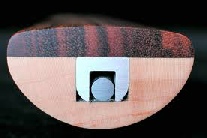
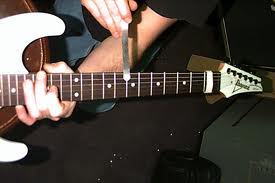
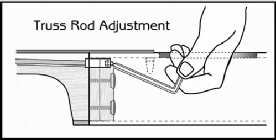
Changing the gauge of the guitar strings or the age of the guitar are also major factors necessitating truss rod adjustment.
Adjust The Guitar Truss Rod Carefully
Truss rod adjustment should be taken seriously. Done wrong, truss rod adjustments will destroy the neck of your guitar! That being said,
must specifically ask the dealer for it or they won’t give it to you.
Carefully inspect the guitar neck and fretboard. If there are frets that are excessively worn down or pulling up out of the grooves, then a qualified, experienced luthier should be consulted. As electric guitars are produced with single action and double action truss rods, it is also a good idea to contact the instrument manufacturer to determine what type of truss rod your electric guitar has before you adjust it.
Guitar Truss Rod Measurement
As we’ve noted previously, it is not necessary to purchase an expensive guitar work bench, a clean kitchen table and a couple of bath towels will work just fine. Spread the towels on the table (double thickness) to protect the finish of the table and the instrument. Tune the guitar and
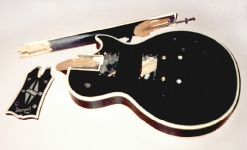
it is something that can be performed successfully if a few common sense guidelines are followed. To adjust the truss rod, there are a few tools that need to be acquired. You will need a capo, an automotive feeler gauge set and the right sized truss rod wrench. Most new guitars come with the appropriate truss rod tool, but you
instrument has more or less clearance and you’re satisfied with how it feels, plays and sounds, don’t disturb its settings for the sake of being correct. After all, the important thing is how it plays, not what the guitar specifications are.
Guitar Truss Rod Adjustment
Locate The Truss Rod Adjuster
If it is determined that a truss rod adjustment is necessary, the next step is to determine where the adjuster is located. Electric guitars have
damage your instrument. At this point it would be wise to look into replacing the neck (if possible) or taking your guitar to a qualified luthier for repairs. By collecting a few basic tools and following these guidelines, truss rod adjustments can be accurately and safely performed on your kitchen table.
Truss Rod Adjustment When The Neck Must Be Removed
If the truss rod adjustment is in the heel of the neck and not accessible, a 24 inch straight edge (a 2 foot carpenter’s square works great) and
circumstance where a double action truss rod is necessary. If the adjuster is turned 1/4 to 3/4 turns counter clockwise and tension is felt, then you probably have a double action truss rod. In this case, continue to make small adjustments as described above. However, if the truss rod is adjusted counter clockwise and there is no tension felt through the adjuster, stop immediately. This is obviously an indication of a single action truss rod and continued adjustment may
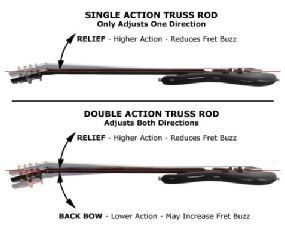
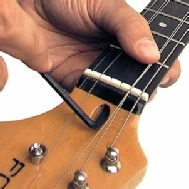
them to the side. On guitars that have the truss rod adjuster in the heel of the neck (and accessible) or in the body (common in hollowbody guitars) the following instructions also apply. With an instrument that has too much clearance, SLOWLY and carefully turn the adjuster clockwise no more than 1/8 turn at a time. Use patience here, adjust in small increments and you greatly lessen the chance of breaking the neck! After each 1/8 turn adjustment, retune the guitar, recheck the clearance measurement and let it sit for a few hours so the guitar neck material can
How To Adjust The Truss Rod Without Removing The Neck
When the adjuster is on the headstock, remove the cover plate if present. If the D and G strings prevent access, loosen both strings and move
acclimatize itself to the changes. If the clearance at the eighth fret was sizeable, adjust in small steps and let the instrument sit for a few days between adjustments to give the neck plenty of time to adapt to the changes. The rule of thumb is do not turn the truss rod adjuster more than ½ turn in a twenty four hour period. This is extremely important!
If the clearance is too small or there is no clearance at all, meaning that the neck is bowed upward toward the strings, carefully turn the truss rod adjuster counter clockwise in 1/8 turn increments. This is the
simple arithmetic will solve the problem. Tune the electric guitar, place a capo on the first fret, fret the low E string at the last fret on the neck and measure the clearance at the eighth fret. Write the amount of clearance down for later reference. Slowly loosen all the strings and remove them. Remove the guitar neck from the body and carefully place a straight edge down the length of the neck, resting on the first and last fret. Measure the clearance between the
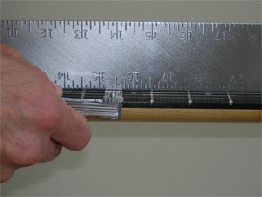
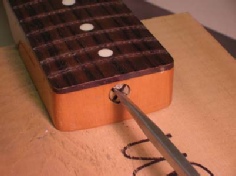
string tension will bow the neck .002”, so you need to set your “off body” truss rod adjustment at .010”. By setting the truss rod adjustment at .010”, we are compensating for the .002” string tension bow, which will give us the desired .012” clearance when the guitar is reassembled.
When you are satisfied with the guitar truss rod adjustment measurements, it is time to move to the next section of Electric Guitar Setup .com; Adjusting the Electric Guitar Action.
bottom of the straight edge and the top of the eighth fret. Because of the effect of the string tension, the clearance measurement will probably be smaller than your original measurement, which was taken when the neck was being bowed by the guitar string tension. The difference between the two measurements needs to factored in when making the truss rod adjustment with the neck off the guitar body
with no string tension applied. For example, if you want to set your electric guitar up with .012” clearance, but it measured .020” with the neck on the body and the strings attached. The “off body” measurement at the eighth fret is .018”. The difference in the two measurements is .002” and the overall goal is to have .012” when the neck is restrung. We know that when the neck is bolted to the body and strung the